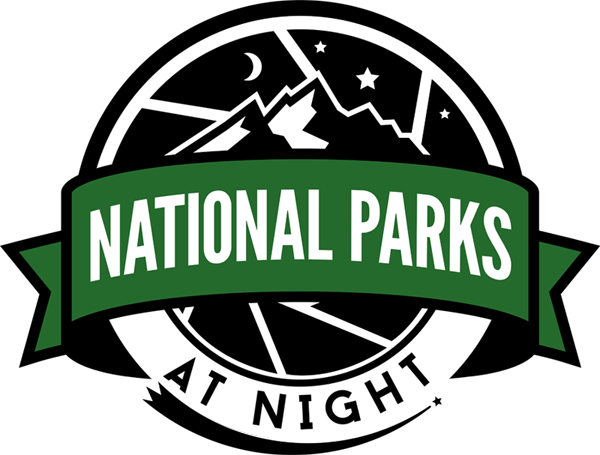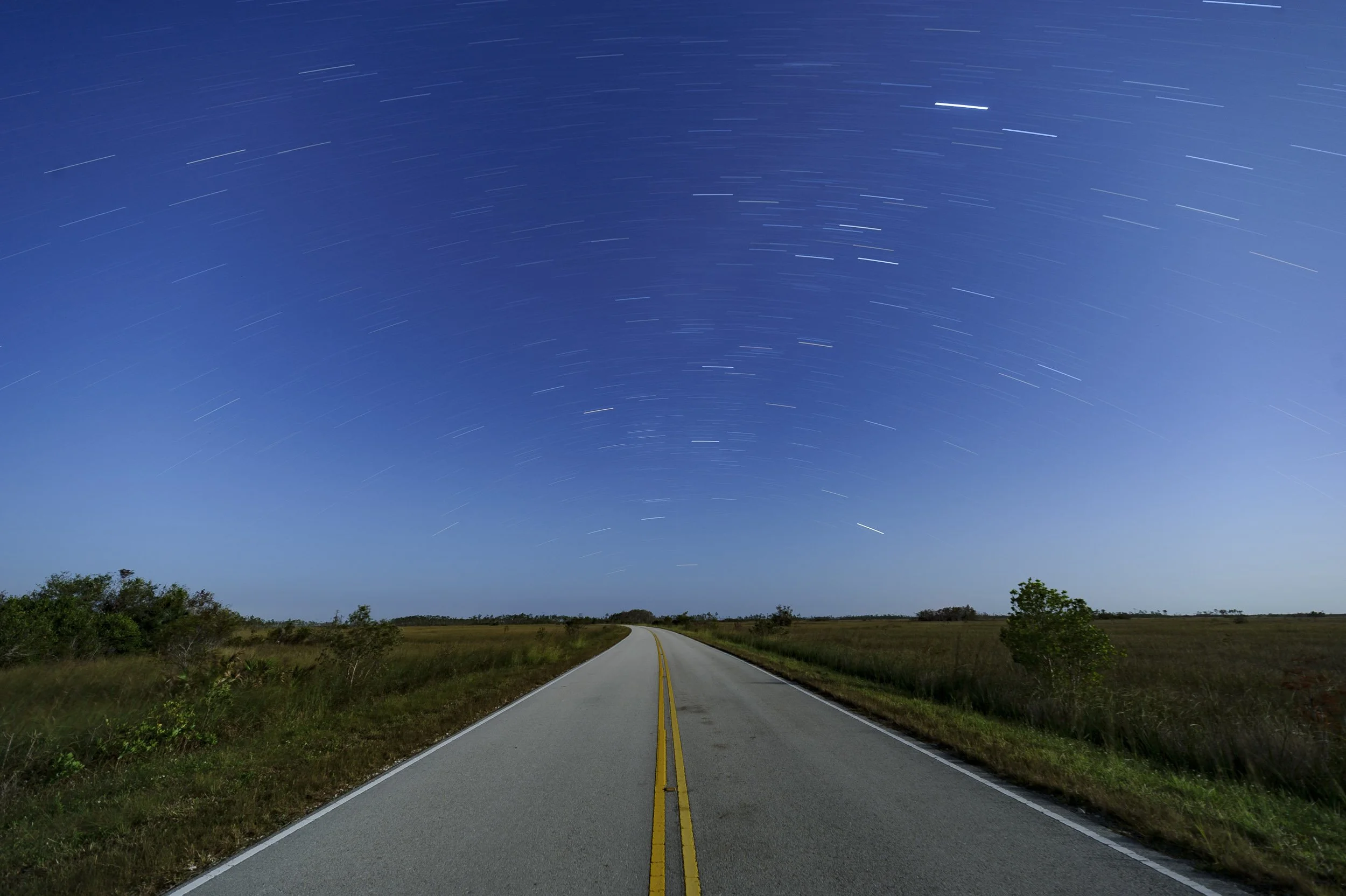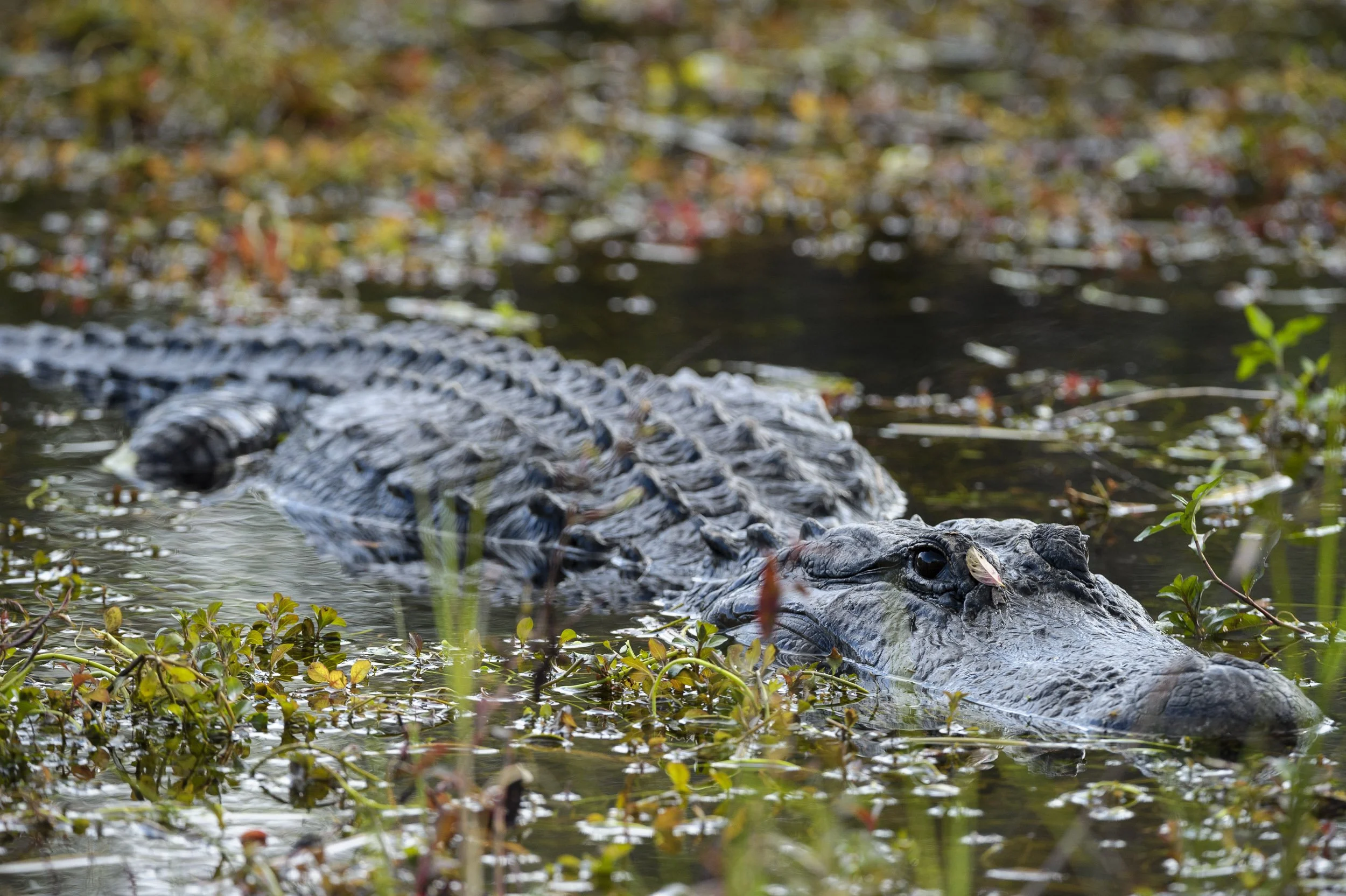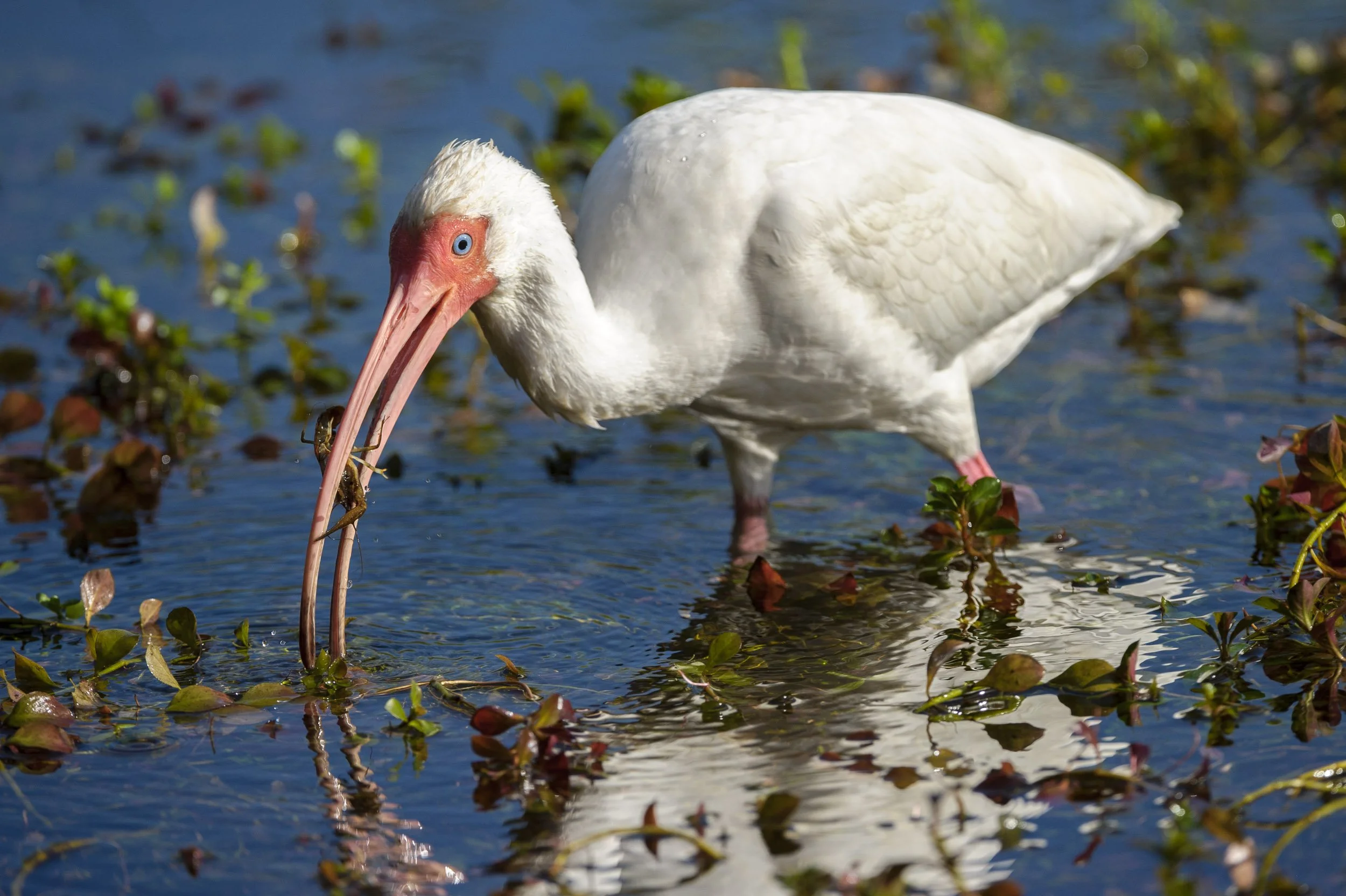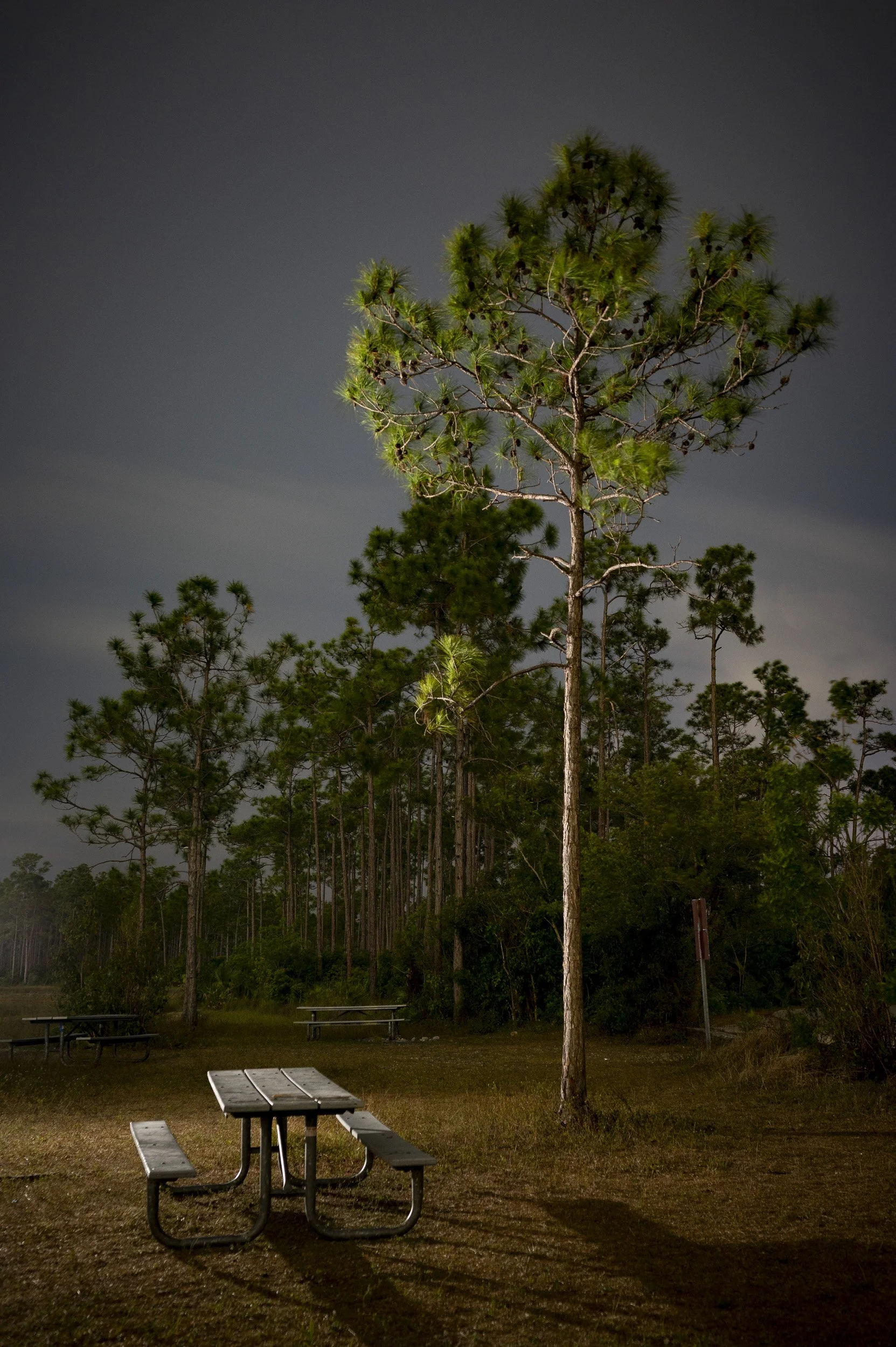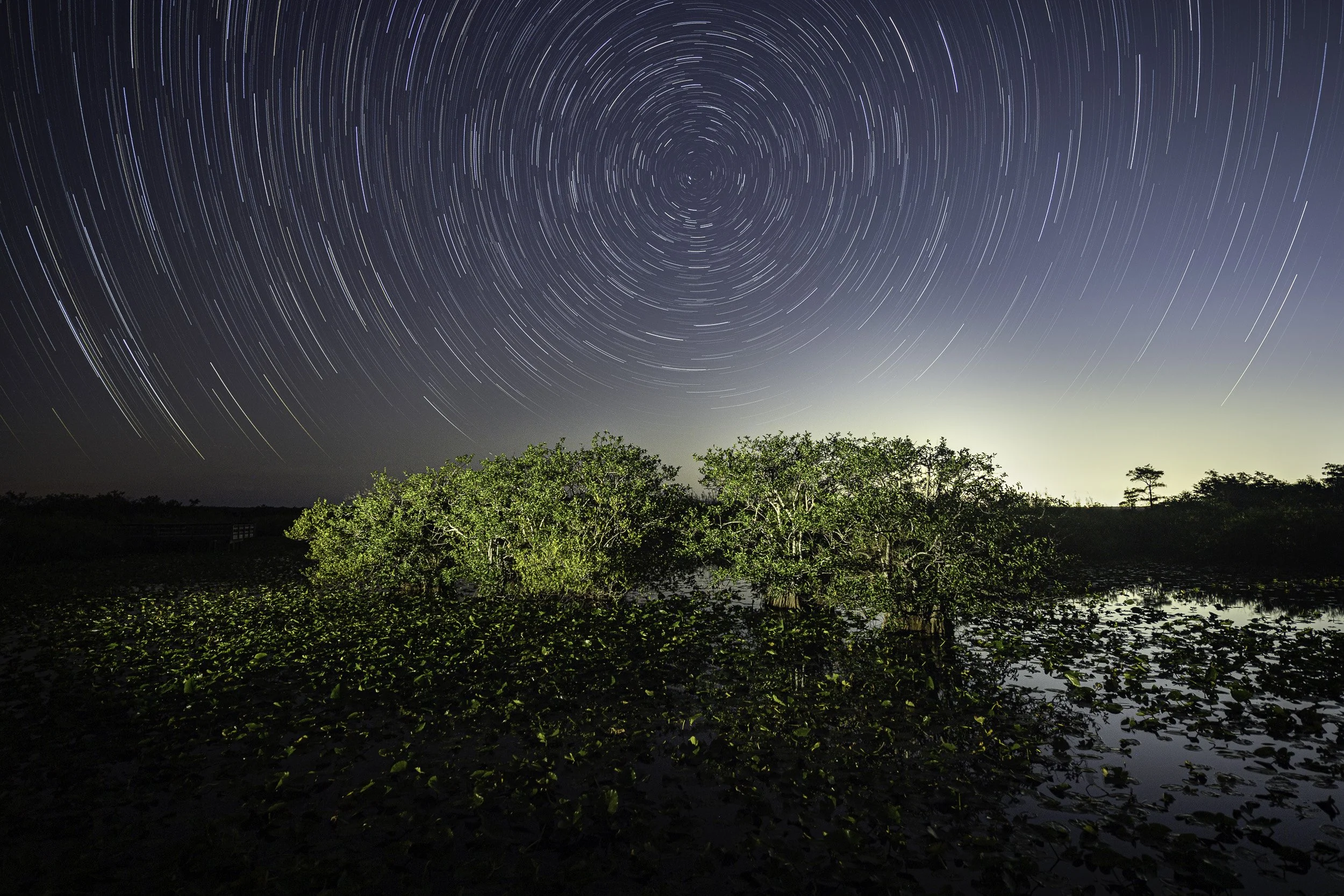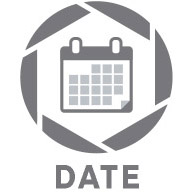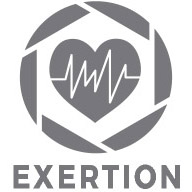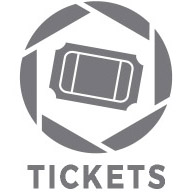Everglades National Park & the Geminids
The Everglades is primal, yet inviting. The landscape is raw, yet beautiful. The mosaic of habitats invites photographers to explore and be inspired by wetlands and pinelands, coastal lowlands and freshwater ponds, hardwood hammocks and cypress stands, and vast sawgrass-prairie "rivers of grass." And, of course, the wildlife, from migrating birds to the park's most famous resident, the American alligator. Over them all at night hover a crisp, starry sky and the many, many meteors of the peak of the Geminids.
Workshop Details
Main Workshop
December 10-14, 2026 — Sold Out, Join Waitlist Below
This is a 5-night, 5-day workshop. Your adventure begins on the morning of December 10, and ends after a final night shoot on December 14.
$2,295 + applicable taxes.
Skill level
Open to all who have an understanding of the basic principles of photography and of their cameras.
Group size
14, with 2 instructors — 7:1 ratio
NPS website
Add-On: Big Cypress
December 15-17, 2026
This is a 3-night optional add-on to Big Cypress National Preserve, available only to attendees of the main workshop. More information below.
$1,495 + applicable taxes. Registration information will be sent to attendees of the main workshop.
Group size
14, with 2 instructors — 7:1 ratio
NPS website
Workshop Leaders
Registration
Hoping to get a spot? Sign up below for our no-fee waitlist.
| • Deposit of $800 is required to reserve your spot. |
| • Balance of $1,495 is due on September 11, 2026. → Pay balance here. |
| • You may choose the “Pay in Full” ticket if you desire to pay all at once. |
| • Last day for a cancellation request is September 10, 2026. (see cancellation and refund policy) |
| • The workshop fee does not include lodging, food, airfare, entrance fees, or transportation to or during the workshop. |
| • The workshop fee includes a backcountry boat tour of Everglades National Park. |
The Everglades Experience
For five nights, we’ll venture into the primitive landscapes of the Everglades to photograph stars and star trails, the coastline and waterfront locations, hammocks and sawgrass rivers, and more. Including the Geminid Meteor Shower, which falls during a new moon and is predicted to generate over 130 meteors per hour the night of the peak (which happens to be the fourth night of the workshop.
There will be plenty to keep us occupied until then, including star points and star trails over the wetlands of the largest subtropical wilderness in the United States. We’ll also have opportunities for light painting and photographing some structures.
Moreover, we’ll make at least a couple of day trips to photograph wildlife and to learn more about this amazing park. This will include a daytime boat trip to the park backcountry, where we’ll get to tour Coot Bay and Whitewater Bay, two inland bodies of water that scarcely few park visitors ever get to see.
We will do all of this from our base at the recently reopened Flamingo Lodge, which sits right on the shore of the Gulf Coast at the southern edge of the national park. Each room has a water view and kitchenette, so we’ll be sleeping steps away from mesmerizing views of dark skies over the Bay of Florida.
The Big Cypress Add-On Experience
After our workshop in Everglades National Park we’ll have the opportunity to fully, and literally, immerse ourselves in a diverse ecosystem that provides the freshwater flow to the Everglades.
Big Cypress was America’s first national preserve. It protects over 700,000 acres of swamps, prairies and uplands. Big Cypress is larger than the entire state of Rhode Island, and was designated an International Dark Sky Park 2016.
During this three-night add-on we'll look for alligators, birds, snakes and panthers on wet swamp walks, as we learn more about the rich history of Big Cypress. We’ll visit the gallery of Clyde Butcher, known as the “Ansel Adams of Florida.” Clyde’s large format black and white photographs of Big Cypress and the Everglades, as well as his constant activism, have helped continue to protect this very special place.
We’ll also have a very special guide on this add-on, local night and conservation photographer Anthony Sleiman. Anthony shared his passion about the Everglades and Big Cypress as a speaker at 2024 Night Photo Summit, and we’ve spent several nights under the Floridian night skies with him. Anthony will share some of his favorite and secret spots in Big Cypress for us to capture under the stars.
Note: This optional add-on is available only to workshop attendees. You will receive a link to purchase a ticket (if desired) after registering for the main workshop.
What You Should Know
Participants must have at least basic photo skills, know their cameras well, be comfortable shooting raw in manual mode, and have the ability to do at least rudimentary post processing on your images. Photoshop skills will be helpful, but are not necessary.
If you would like to join us on this trip but are unsure whether you have adequate night photography skills, we can offer pre-event tutoring to get you ready for your adventure with us. Additionally, a few of us have written books that may be productive pre-trip reads.
What You Will Learn
You’ll go home after the workshop with a solid grasp of night photography in a dark environment, and a good foundation in photographing and editing meteors.
TOPICS COVERED WILL INCLUDE:
planning and executing a meteor shower shoot
processing a meteor showers
photographing star trails and star points
scouting and shooting a moonset
how to deal with long exposure noise in warm environments
and more …
Night Conditions
Logistics & General Info
Travel
You are responsible for arranging and paying for your own transportation.
Nearby Airports:
Miami (MIA) — 1.5 hours from Flamingo
Fort Lauderdale (FLL) — 2 hours
Rental Car
You will need a rental car to get to the workshop and to the shoot locations.
There is no need for four-wheel-drive.
If you are interested in carpooling or sharing a rental car, let us know and we will try to connect you with another attendee looking for the same.
Lodging & Food
We will be staying in the heart of Everglades National park, right on the shore of the Gulf Coast, at the Flamingo Lodge.
You are responsible for arranging and paying for your own meals and accommodations.
Lodging
You are not required to stay at the official workshop lodging, though doing so does make it easier to meet with the group each day.
Alternatively, camping and glamping are also available in Flamingo. The next closest hotel however, is in Homestead, an hour away.
Info and group code will be sent once our lodging partner is ready to begin taking reservations.
If you are interested in sharing a room, let us know and we will try to connect you with someone like-minded in the group.
Food
Flamingo Lodge has a restaurant, and the nearby marina has basic prepared food and groceries.
The next closest food is in Homestead (outside the park).
Each room at the lodge has a kitchenette. You may want to buy groceries before heading into the park for the workshop.
We encourage eating two meals per day—a good breakfast and a great late lunch.
When on the night shoots, you may wish to bring snack food or a sandwich and plenty of water.
Weather
Expect daytime highs in the high 70s F, and nighttime lows in the 60s.
Recommended Attire
Shorts or pants and short-sleeve shirts for daytime, pants and long-sleeve shirts for night.
A sweatshirt and medium-weight jacket will likely be useful.
For the night shoots, you might consider mosquito-repellent clothing, including gloves and a head net.
Comfortable and protective shoes are recommended for getting around. There won’t be long hikes, but we will be on trails, so quality trail shoes or hiking boots would be optimal.
Exertion Level
The exertion level of this workshop is Easy, with one potential hike of 1 to 2 miles on a flat trail. (See more about our classifications.)
No vigorous activity will be required during the workshop, but please consider your physical abilities prior to registering. There won’t be any long hikes, but we will be doing short hikes on unmaintained trails, and you should be comfortable carrying your own equipment over uneven ground in the dark.
Considerations
There will be mosquitos. We’ll be visiting at the beginning of the dry season, when the mosquito population is far, far smaller than in the wet season. But they will be there with us, to an extent. See our blog post “Mitigating Mosquitos.”
IMPORTANT: We encourage reading our FAQs page for more information about skill and gear requirements, and other information that pertains to all our workshops.
If you have questions, please contact us—we're happy to talk it over with you.
A Quiet Morning, Until …
“My heart raced a little. I was sitting in a safe place, but I’d had no inkling …”
How many times have I been to the Everglades? Oh gosh …
If I tried, I could probably count, but for what point? I do know it’s one of my favorite places, and that’s what matters to me. I have myriad memories of visiting and photographing the park—sunrises, sunsets, starry skies and wildlife adventures included.
I’ve been alone there with my camera in all sorts of scenarios—with the sun rising through a ground fog, with a lonesome barred owl hooting in a hammock canopy overhead, with stars reflecting in the calm of a remote brackish lake. I’ve camped with the sound of ocean waves gently ebbing onto the shore, and hiked through sun and heat, and canoed among the mangroves of Nine Mile Pond with modern-day dinosaurs lurking beneath.
One morning I woke early, before the sun, and meandered to the Anhinga Trail. In the waning darkness, I walked into the sawgrass marsh, cameras and tripod in tow, to the dead end of a boardwalk trail, where I set up and sat down and waited for dawn, in a type of silence that can be found only in nature.
The horizon began to glow, and the sky began to lighten. And then I heard it. I had thought I was alone, which, in hindsight, was a foolish assumption. From within 5 or 6 feet away, somewhere unseen in the tall sawgrass, rose a guttural, primal, gravelly bellow. An alligator was waking, and letting the world know.
My heart raced a little. I was sitting in a safe place, but I’d had no inkling an apex predator was resting so nearby.
Then … another bellow, a little further away. Then, quickly, a third, from my right. Another in front of me, two more behind. Within a minute I was surrounded by a harmony of alligators announcing the coming of day. A minute earlier, I hadn’t even known they were there.
I love being in the national parks. Being. And experiencing. And living at least a part of my life among the wilds and the wild things that live there.
How many times have I been to the Everglades? Not enough.
